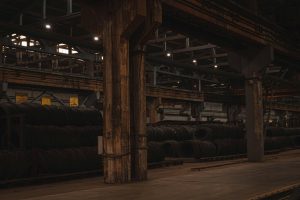Artisanal Fashion: Supporting Local Makers and Traditional Techniques
In today’s fast-paced fashion industry, it can be easy to get caught up in the latest trends and mass-produced clothing. However, there is a growing movement towards artisanal fashion, where garments are lovingly crafted by skilled local makers using traditional techniques. Not only does this support local communities and preserves their cultural heritage, but it also provides consumers with unique, high-quality pieces that cannot be found in mainstream stores. Let’s explore the world of artisanal fashion and how it is supporting local makers and traditional techniques.
The Rise of Artisanal Fashion
Artisanal fashion has been on the rise in recent years as consumers have become more conscious about their clothing choices. Fast fashion, with its focus on producing inexpensive, mass-produced garments, has come under fire for its negative impact on the environment and labor practices. As a result, many people are turning to artisanal fashion as a more sustainable and ethical alternative.
But what exactly is artisanal fashion? Simply put, it involves the creation of clothing and accessories by skilled artisans using traditional techniques. This can include sewing, weaving, embroidery, and other handicrafts that have been passed down through generations. Each piece is unique and reflects the individual style and expertise of the maker.
An Emphasis on Local Makers
One of the key aspects of artisanal fashion is its support for local makers. In a world where big fashion brands dominate the market, it can be challenging for small and independent makers to compete. However, by focusing on local talent, artisanal fashion not only helps these makers flourish but also contributes to the local economy.
Local makers often use locally sourced materials, which further supports the community and reduces the carbon footprint of the fashion industry. Additionally, artisanal fashion promotes fair labor practices, ensuring that makers are paid fairly for their skills and hard work.
Preserving Traditional Techniques
Another significant aspect of artisanal fashion is its emphasis on traditional techniques. Many of these techniques have been passed down through generations and are at risk of being lost in today’s fast-paced world. By supporting local makers and purchasing their handmade pieces, consumers are not only getting a unique and high-quality item, but they are also helping to preserve these traditional techniques for future generations.
Furthermore, traditional techniques often require more time and attention to detail, resulting in a slower and more mindful production process. This contrasts sharply with fast fashion, where speed and efficiency are prioritized. By slowing down the process and valuing traditional techniques, artisanal fashion is breaking away from the disposable and wasteful nature of fast fashion.
The Impact on Consumers
Consumers who choose artisanal fashion over fast fashion are making a statement. By opting for unique and carefully crafted pieces, they are rejecting the cookie-cutter styles of mass-produced clothing. They are also showing support for local makers and traditional techniques, promoting sustainability and ethical practices in the fashion industry.
Additionally, consumers can feel a deeper connection to their clothes when they know the story behind them. Each handmade piece is imbued with a sense of history and cultural significance, adding value and meaning to the garment.
Conclusion
Artisanal fashion is a movement that is gaining momentum as consumers become more conscious about their fashion choices. It supports local makers, preserves traditional techniques, and offers consumers unique and high-quality pieces. It also promotes sustainability and ethical practices in the fashion industry, making it a win-win for all. As consumers, we can play a part in supporting artisanal fashion by choosing to purchase from local makers and valuing the skills and time that go into creating each handmade piece.











